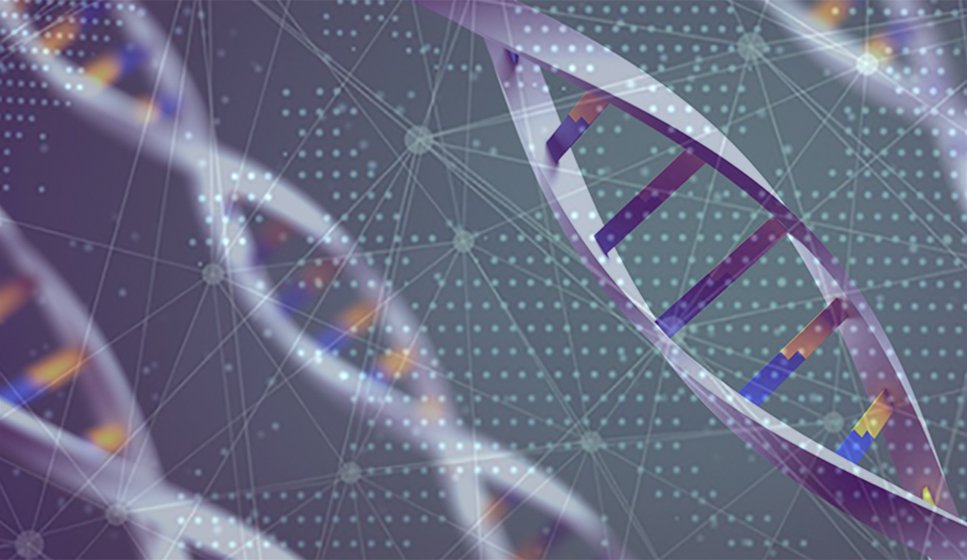-

Epidemiology And Public Health In The Age of Blockchain
What is a blockchain in a public health context?
Blockchain could be defined by 3 main characteristics :
1. Blockchain Is Not Just Bitcoin But A Public Ledger
A blockchain can be described as a public ledger to which anyone can contribute. The ledger keeps track of transactions that are validated by a network of contributors. Bitcoin is a protocol that uses this technology. Just as email is a protocol that works with Internet technology, Bitcoin is a protocol that works with blockchain technology. Therefore, Bitcoin is just an application of a technology that has much greater potential for various industries.
A blockchain works like a ledger that lists the transactions that occur between two parties. These transactions are not only financial as they can be an exchange of data.
2. Enabling the trust protocol
The main idea of a blockchain architecture is to ensure that all the actors of the ecosystem trust a data source. Indeed, trust is the key element to any interaction, especially when it comes to health data. The medical and scientific communities need to ensure that the source of the information they receive is trustworthy. This feature is built by design in a blockchain architecture.
A blockchain is similar to a public ledger where each new information is added only upon consensus from the nodes in the network. The concept is that if a source of data is not trustworthy it will be automatically rejected by the community. Hence, the more people contribute to running a blockchain, the more chances there are that the information is trustworthy.
In a public health context, trust in the source or the use of the data is essential. Public Health institutions need to make sure that they receive accurate and complete data while patients need to ensure that their information is used with their consent.
3. Re-designing interoperable architectures
In order to be effective, a distributed ledger technology must not “erase and replace” the existing architectures. It has to complement and improve them. This is an essential condition for massive adoption of this technology in the public health sector as well as across all industries. A blockchain can therefore be seen as a key element for cohesion and interoperability across all data systems.
Why use blockchains for public health?
A blockchain allows a group of independent actors to share digital assets and information without going through a third party. All the data exchanged between said actors in registered on a distributed ledger. There is no central entity controlling the transactions. Each new information added to the ledger is therefore validated by consensus of the network.
Blockchain technology brings three essential characteristics:
- Privacy
The governance rules of a blockchain make it possible to pre-define access to sensitive data. As such, only entitled and authorized parties can see the requested information. Not only does this insure privacy of the data but it also empowers the actors of the public health sector to define and control permissions.
- Security
A blockchain is a distributed ledger between all the nodes of the network, with no single point of failure. As each new transaction is added only upon consent from the majority of the participants, its systems can hardly be corrupted. Moreover, a blockchain uses cryptographic tools and public key infrastructures to insure the security of the information. Hence, although the ledger is public, the data is encrypted and cannot be read by the participants in the network.
- Interoperability
One of the main issues in the medical field is the lack of interoperability between existing systems. As such, it is difficult to track information between two states or even between two centers in the same city. This aspect is critical from a public health aspect as it is necessary to be able to collect, share and analyse data at a national or even international scale.
Where is blockchain being used for public health issues?
1. The United States
In order to insure a high level of public health, the US needs to share critical information beyond state borders. A violent epidemic or the discovery of a new virus requires taking action rapidly and therefore relies on a capacity of sharing crucial data in a timely manner. The 2014 Ebola crisis showed the deficiencies of the system when several infected individuals were allowed back in the US because the government did not receive information about their health status on time.
The Center for Disease Control and Prevention, part of the U.S. Department of Health and Human Services, is betting on a blockchain-based solution to improve data collection, analysis and sharing at a federal level. The CDC has partnered with IBM to build a network of actors including health agencies or hospitals. The objective is to improve collaboration through secure, compliant and transparent data exchange systems.
Finally, US governmental policies define strict rules in terms of access to information. All health organizations cannot freely send and receive data from the other organizations. Define the roles and rights of each actor is long and complicated. This is where blockchain smart contracts appear to be a good match as they automate the entire process of access management.
2. Estonia
Estonia is perhaps the best example of a large-scale adoption of blockchain technology in the healthcare field. 1.5 million Estonian benefit from fully digitalized medical records backed by a nation-wide health information system. From lab results, to prescriptions or medical appointments, Estonian people can have access to all their medical history and share it among the medical community. The system also allows any individual to see who accessed the data and therefore control permissions.
The Estonian health systems operates on a permissioned blockchain whose actors are defined by the state. This architecture targets three main goals: produce independent and legally sound proofs of record, discover and report unauthorized changes and build a scalable system for over a million individuals.
In Estonia, the state owns the secure databases that store the medical data and that data is open to the medical and scientific community unless the individual says otherwise. Therefore, the information can be used for public health considerations such as tracking the evolution of a disease, build predictive models or adopt policies.
Why is blockchain interesting for public health?
Blockchain technology is a valuable tool to build a system in which trust is a key element. Nevertheless, it is only a tool amongst others. Therefore, it can be used in addition to several other technologies to build an efficient and interoperable system on a large scale.
The key idea for building a successful structure in a public health context is to think in terms of an ecosystem. Each stakeholder must be considered and integrated into the architecture to avoid creating silos of information.
Furthermore, blockchain technology is associated with a reward concept that incentivizes people to participate in the network. These rewards are often materialized by tokens that can be awarded to individuals that show a virtuous behavior. Such behavior can be the respect of set rules or the degree of participation. When it comes to health data, there are those that need it and those that own or produce it. Starting from this simple observation, it should be possible to implement a reward system to incentivize people to share their data with those that need it.
Individuals constantly produce all types of data and part of this information can be relevant to public health institutions. However, it is often difficult to collect the information from a patient and share it with his/her consent. This issue could be addressed by creating a token that would reward patients when they share their medical information. Public health organizations could be the ones creating and managing the token distribution according to set standards codes into smart contracts. This token could afterwards be used by patients to pay for medical services.
Furthermore, when it comes to collecting information for public health research, organizations often lack data from developing countries or minorities. Indeed, these populations either don’t use the healthcare system very often for financial reasons or it is difficult to reach them. Nevertheless, they could be incentivized to share their data in exchange of tokens that they could use to pay for drugs or medical consultations. This would allow researchers to collect data and patients to enter the medical circuit.
Governments are building numerous use cases around the use of blockchain technology in a public health context. The main challenge is to connect all the actors of the ecosystem in order to have a reliable and coherent data exchange platform. For now, the US and Estonia are leading the way of large scale adoption of blockchain-based solutions. However, the challenges are global and these solutions should soon be considered by other countries.

My name is Anca Petre and I am a Pharm. D and Business double degree candidate at Université Paris-Saclay and INSEEC Business School in London and Paris. In my own work, I primarily focus on the crossroads between healthcare and digital technologies. I am currently working on a research about the possible applications of Blockchain in Healthcare and I contribute to Blockchain Age and Intelligent HQ.
I particularly enjoy working the sectors’s startup environment. I have previously worked at e-ssencials, a startup which develops digital solutions for patients with chronic diseases. I have also participated in three hackathons to help develop and further innovate the healthcare circuit.
I worked at Sanofi in the Biotechnologies Department where I successfully managed to reduce the production time by half for several products.
At university, I am the founder and president of the Speak Up ! Association which allows over 500 students to improve their public speaking skills.



























